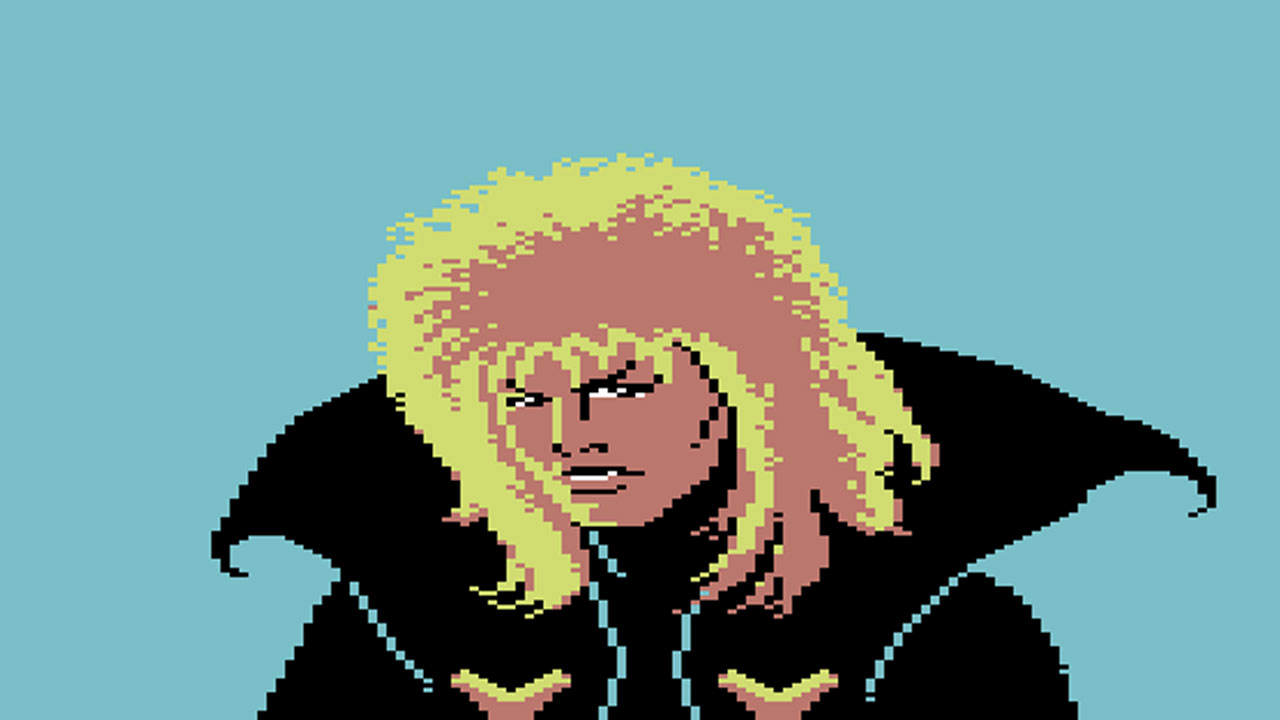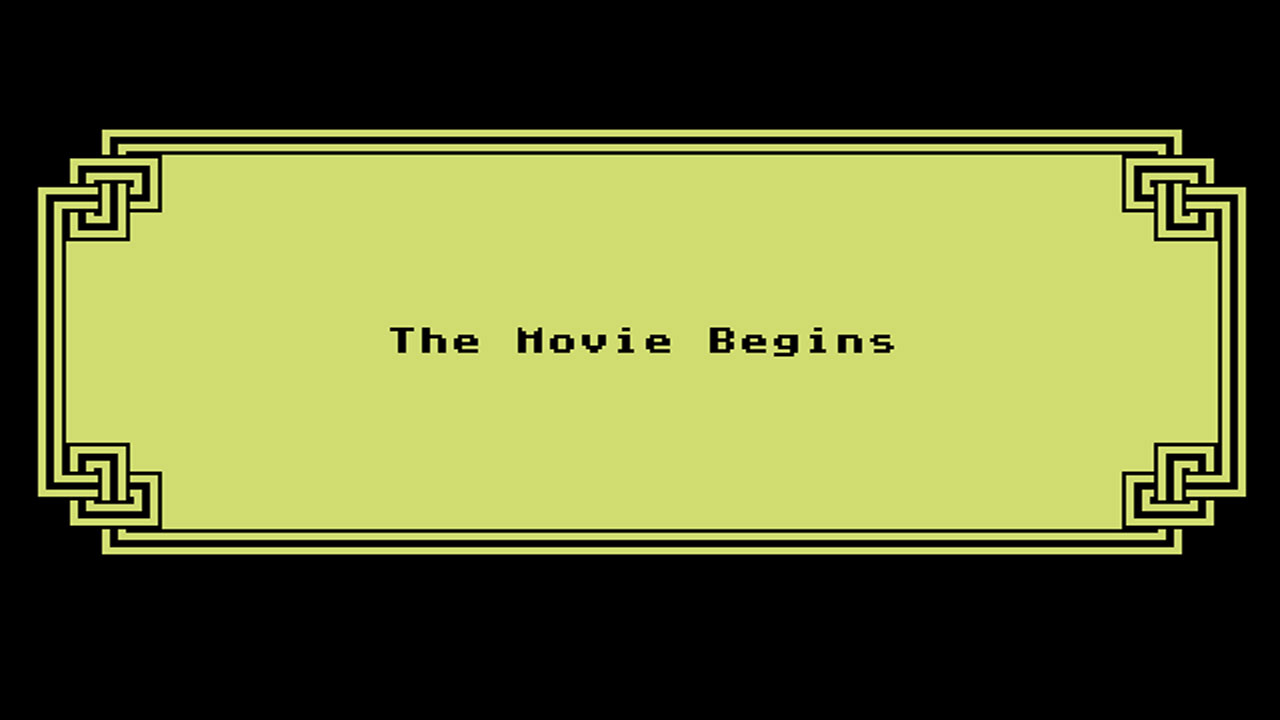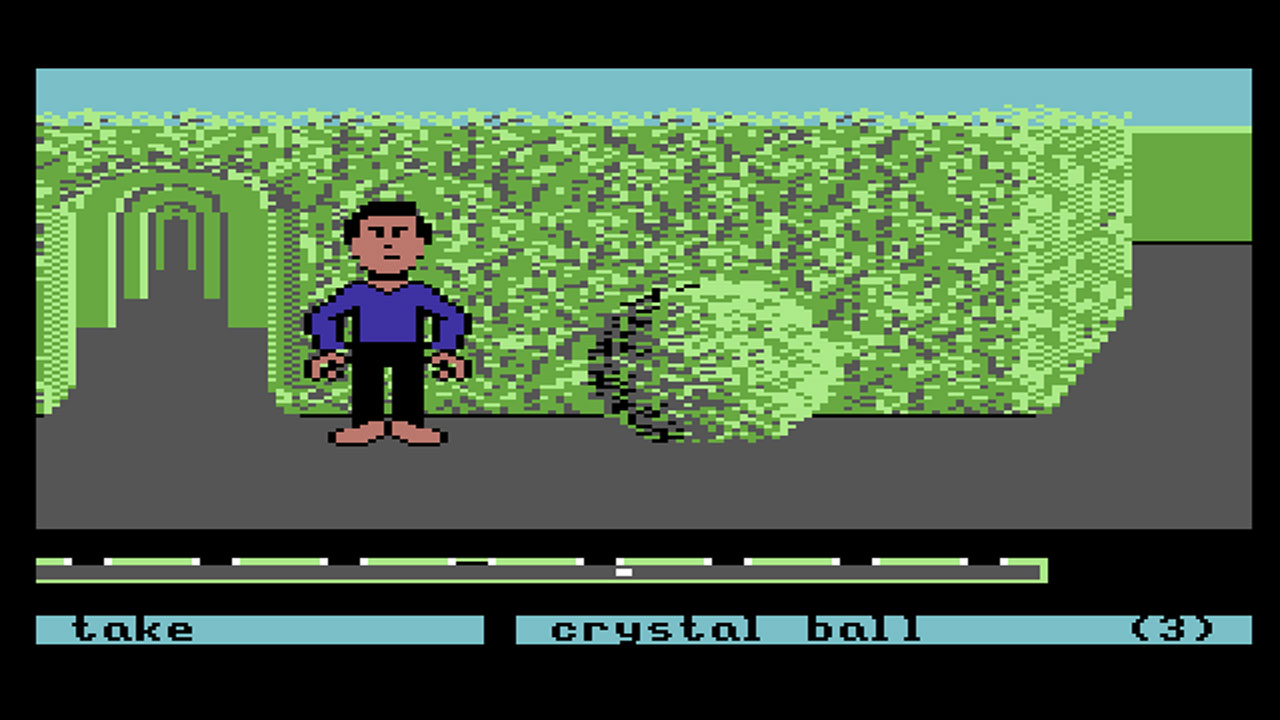The making of Labyrinth: The Computer Game – "We didn't know how popular it was going to be"
Lucasfilm Games walks Retro Gamer through its very first adventure game, its 1986 adaptation of Labyrinth

When you look closely at its many elements, Labyrinth has all the ingredients for a rollicking adventure video game – an impenetrable maze, an enigmatic antagonist, traps, puzzles, and a whole bestiary of goblins and other fantastical characters, courtesy of Jim Henson's Creature Shop. A creative collaboration between Jim Henson and Lucasfilm, with a story by Monty Python's Terry Jones, Labyrinth was the second fantasy movie from Jim Henson's studio after 1982's The Dark Crystal. The film starred Jennifer Connelly as Sarah, a plucky teenager who must navigate the Labyrinth of glam-punk Goblin King, Jareth, played by David Bowie, to rescue her kidnapped baby brother.
"Labyrinth was the first film project that Lucasfilm offered as a licence to us," recalls the game's lead designer and programmer, David Fox. "They said they were doing this project and asked if we'd be interested in doing a game version, so we saw an early script and a videotape that showed some excerpts of some of the scenes, rough cuts that just showed the interaction of the puppets and actors. The names attached were impressive, especially Jim Henson. So we thought, 'Yeah sounds good.'" This video game would be the very first adventure released by Lucasfilm Games, the company that later wowed the world with titles like Maniac Mansion and The Secret Of Monkey Island.
For the developers at Lucasfilm, who had previously not been allowed to create products based on the company's movies (including Star Wars) Labyrinth was something of a watershed moment. "I think we were all pretty excited," says graphic artist Gary Winnick. "One of the reasons we came to Lucasfilm was the prospect of being able to work with the film development groups within and connected to the company. The thought of being involved in a game based on a film that Jim Henson was directing and George [Lucas] was involved in was pretty compelling. As far as the film goes, I liked it, and I was also a David Bowie fan. The look and feel of the design was also right up our alley given its story, fantasy and many game-like elements. Having to get past obstacles and adversaries in a maze is pretty game-like."
David was invited to London, where the Labyrinth film was being produced, to discuss ideas for the game version. "We had a brainstorming week with Douglas Adams, who wasn't really associated with the film but was good friends with Jim Henson," he tells us. "I think Terry Jones was also in that group of people that knew each other, although he did not participate in the brainstorming. I was 35 years old and still partially in awe that I was even at Lucasfilm, and here I was meeting with Douglas Adams! I loved Hitchhiker's Guide To The Galaxy, so I was totally in awe of him."
Working from the script


If you want in-depth features on classic video games delivered straight to your doorstop, subscribe to Retro Gamer today.
We basically went through the entire movie," David continues, "although we never got a screening, we knew it from the script. I was giving input and taking notes when I could but most of the ideas came from Douglas and [Sesame Street writer] Christopher Cerf, who, I think, knew each other. There was this crazy energy coming from the two of them for idea after idea… I also remember taking notebooks for notes and going to the Creature Shop and getting to see some of the muppets they were using in the movie."
"One night Douglas invited us over to his house for dinner and Jim Henson was also invited. He was sitting right across the table from me and if I was a little intimidated by Douglas I was probably more so by Jim because I knew his work even more. I'd be eating my food and every once in the while I'd hear Kermit The Frog across the table from me. Jim was really kind, humble, unassuming. Douglas was too, they were both extremely warm creative people who I felt honoured to be in the presence of. I also remember that when Jim arrived he came with a huge smoked salmon, maybe three foot long. That was intended as a joke, so Douglas could say at the end of the evening, 'So long and thanks for all the fish!'"
Douglas was behind one of the most radical ideas in the Labyrinth game, seen right at the start. "We were wondering how to transition from 'real life' to this fantasy world," David explains. "We didn't want you to be the main character in the movie, so we came up with the idea of the player being themselves… a male or female character, depending on who they chose at the beginning. So we thought, maybe you should start off by going to a movie theatre, go inside to see the film, and get sucked into the Labyrinth universe. And Doug said 'Let's start as a text adventure!' I think the Hitchhiker's text adventure, which he had been involved with, was already out by this point, so he knew text adventures well. And he said 'What if we have it like the Wizard Of Oz, where it starts in black and white then goes into Technicolor when she goes to the new land? Why Don't we start with a text adventure then switch to a full screen colour graphic adventure when you arrive in that universe?' It sounded like a great idea, so I said, 'Let's try it!'"
Weekly digests, tales from the communities you love, and more
In a land before SCUMM

Back at Lucasfilm, David and his team sat down to the unenviable task of amalgamating all of these ideas into a game, in a relatively short development window given the film's impending release. "We didn't have time to do a mature Infocom-style parser so it was my idea to do this simplified interface, like a slot machine," he says. David's solution was to let players pick from a list of verbs and nouns which they scrolled through via the keyboard cursor keys.
"There was no interpreter [like the forthcoming SCUMM, used for developing Maniac Mansion] at the time, it was all hand coded in 6502 assembly, so it was kind of painful. Our system was very different from SCUMM, which gave you a set of verbs from the start – here, we'd add and remove stuff as necessary as you went on. This worked when you had an interface that was a continuous wheel, but wouldn't have worked in a SCUMM game where you had all the words on screen. However, in a way it allowed for more flexibility."
"I was given a stack of colour and black and white movie stills to work from," Gary recalls about creating the graphics. "Also a number of character turn-around references. I remember having access to any available reference necessary. It was one of the first times I was attempting to create sprites and backgrounds based on an existing property. We didn't really have access to scanning technology at the time. So what I started doing was tracing my drawings onto a piece of clear plastic, then I'd tape that to the front of my monitor and plot an outline with my drawing software looking through the overlay. Once I had approximated the shape I'd then clean that up."
"I don't think we had to cut much from the film," David continues. "There were a couple things we weren't sure how we were going to do them, we wanted to get a number of core elements in the game so that you felt you were in the movie. It was similar to the issue that came up when we did Indiana Jones and the Last Crusade – we didn't want players to have a big advantage if they had seen the movie. In fact in this case we didn't want to assume you had seen the movie at all because we didn't know how popular it was going to be."
Hedging their bets

When the film was released, unlike its predecessor The Dark Crystal, it was not a success at the box office, making only around half its actual budget. As such, the game was overlooked when it hit the stores. "I've heard some people say they felt it was a better creative success in some aspects," says David, "but the film ended up with this huge cult following because of Bowie, and over time it's become way bigger. I think because the film didn't do that well at the time Activision maybe didn't put much money into marketing it. "
At this point, Retro Gamer mentions one of Douglas's other in-game quirks, the inclusion of the word 'adumbrate', an obscure verb which means 'to foreshadow'. "Douglas had this idea to adumbrate the elephant," chuckles David. "I don't know where this came from, he just loved the word, he thought it was really funny… and who was I to say no to Douglas Adams?! So there's one use, I think you get stuck in an oubliette ( cell) and the only way out is to adumbrate the elephant, I don't think we see it, it's done with sound or something, but it creates a hole and you end up escaping. So you're foreshadowing the elephant, and by foreshadowing it, it appears." That's so very Douglas, we both agree
This feature first appeared in issue 166 of Retro Gamer Magazine. For more, be sure to check out Retro Gamer and follow the team on Twitter.
Retro Gamer is the world's biggest - and longest-running - magazine dedicated to classic games, from ZX Spectrum, to NES and PlayStation. Relaunched in 2005, Retro Gamer has become respected within the industry as the authoritative word on classic gaming, thanks to its passionate and knowledgeable writers, with in-depth interviews of numerous acclaimed veterans, including Shigeru Miyamoto, Yu Suzuki, Peter Molyneux and Trip Hawkins.



